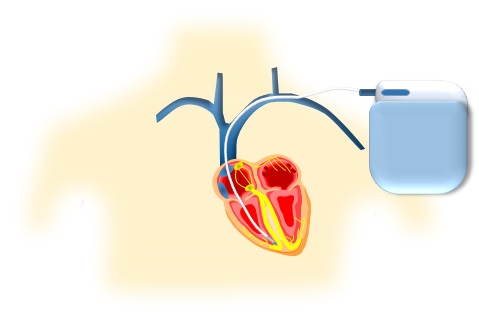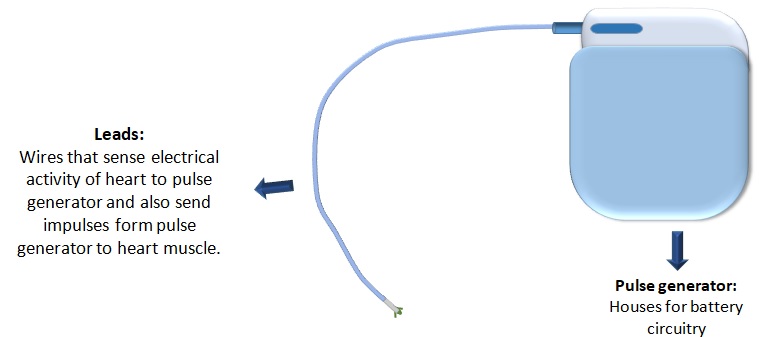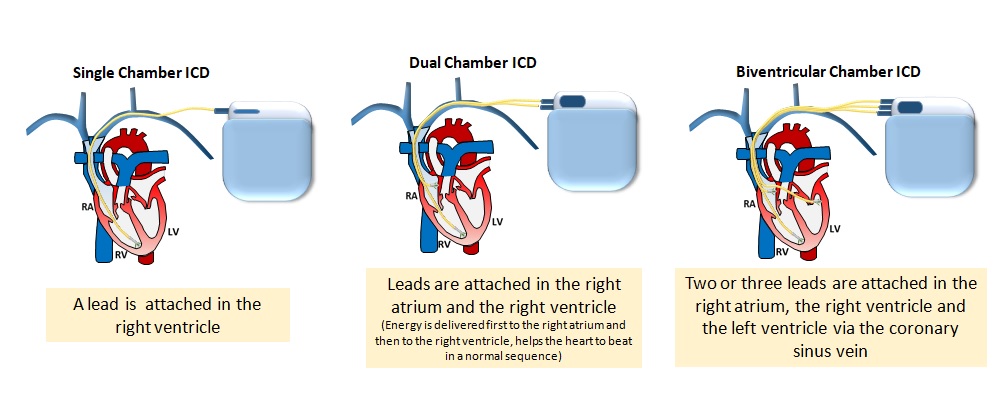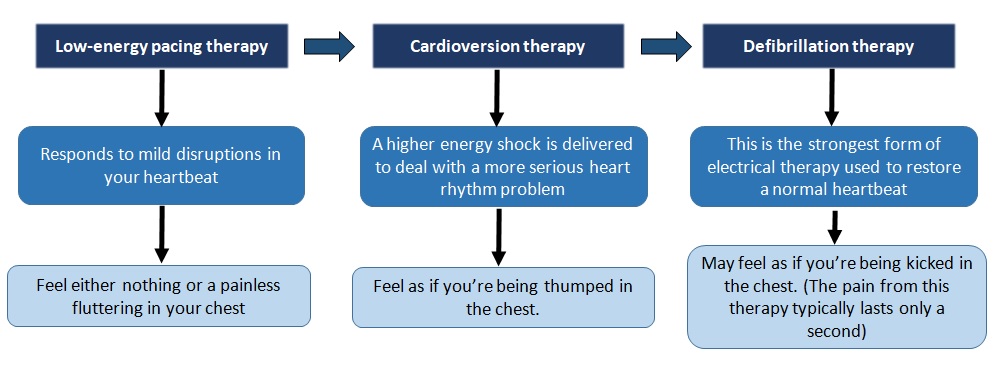Implantable Cardioverter Defibrillator (ICD)
What is ICD?
- An implantable cardioverter-defibrillator (ICD) or automated implantable cardioverter defibrillator (AICD) is a device implantable inside the body, able to perform cardioversion, defibrillation, and (in modern versions) pacing of the heart.
- The device is therefore capable of correcting most life-threatening cardiac arrhythmias.
- The ICD is the first-line treatment and prophylactic therapy for patients at risk for sudden cardiac death due to ventricular fibrillation and ventricular tachycardia.
- Current devices can be programmed to detect abnormal heart rhythms and deliver therapy via programmable anti-tachycardia pacing in addition to low-energy and high-energy shocks.
- AICD was trademarked by the Boston Scientific corporation, so the more generic ICD is preferred terminology.

What It is Used For:
- Ventricular fibrillation.
- An abnormally fast heartbeat (ventricular tachycardia).
- For an enlarged heart resulting from a heart disease called dilated cardiomyopathy and fainting spells (unexplained syncope).
- Coronary artery disease, the heart is pumping a low volume of blood.
- For a genetic (inherited) form of heart disease that can cause sudden death (hypertrophic cardiomyopathy), even in young people.
- History of Sudden Death.
ICDs are composed of two main part:
- Generator
- Wires (leads)

ICD generator
- ICD generators must be capable of providing low-energy current output for monitoring and pacing as well as high-energy current pulses for shock delivery for defibrillation.
ICD generators house contain several key components that are:
- Battery to power the generator
- Capacitor(s) and a charging circuit to provide the high-voltage pulse for shocking the heart
- Microprocessor-based control systems and electronic circuitry to provide precise delivery of electronic pulses for pacing, sensing, and monitoring functions (ROM/RAM(Memory)/Telemetry control)
- Sense circuits and amplifiers for cardiac electrical signals
Current device batteries last about 6–10 years, with advances in the technology (batteries with more capacity or, potentially in the future with rechargeable batteries) it may be possible to increase this well past 10 years.
Leads (electrode wire)
- Electrode wires that are connect to the generator and passed through a vein to the chambers of the heart.
- The lead usually lodges in the apex or septum of the right ventricle.
.jpg)
Types of ICDs

What is the difference between ICD and Pacemaker
Both ICDs and pacemakers are medical devices that are implanted inside the bodies of heart patients.
- An ICD continually monitors heart rhythm and can send low- or high-energy electrical pulses to correct an abnormal heart rhythm(switch to high-energy pulses when the low-energy shocks are ineffective). Pacemakers, however, only give low-energy electrical pulses to restore regular heartbeat.
- ICDs are often permanent safeguards against sudden life-threatening arrhythmias. ICDs are more effective in patients at high-risk for or with a history of sudden cardiac arrest (high-energy electrical pulses to restore their regular heartbeat). Pacemakers are also available as temporary units and are generally designed to correct slow heart rates, i.e. bradycardia.
- Most new ICDs can act as both a pacemaker and a defibrillator. Many can also record the hearts electrical patterns when there is an abnormal heartbeat, a useful tool when planning future treatment.
- The thickness and size of a pacemaker is much smaller than an ICD.
All defibrillators that are implanted inside the heart (intracardiac) are pacemakers.
All pacemakers are not defibrillators.
An ICD can be programmed for these therapies :

NBG Code

- Positions I, II, and IV indicate which chambers are to be shocked or selected for either ATP or antibradycardia pacing.
- Position III relates to the devices used for detection of a tachycardia event, an electrogram signal, or one or more hemodynamics-related variables such as blood pressure or transthoracic impedance.